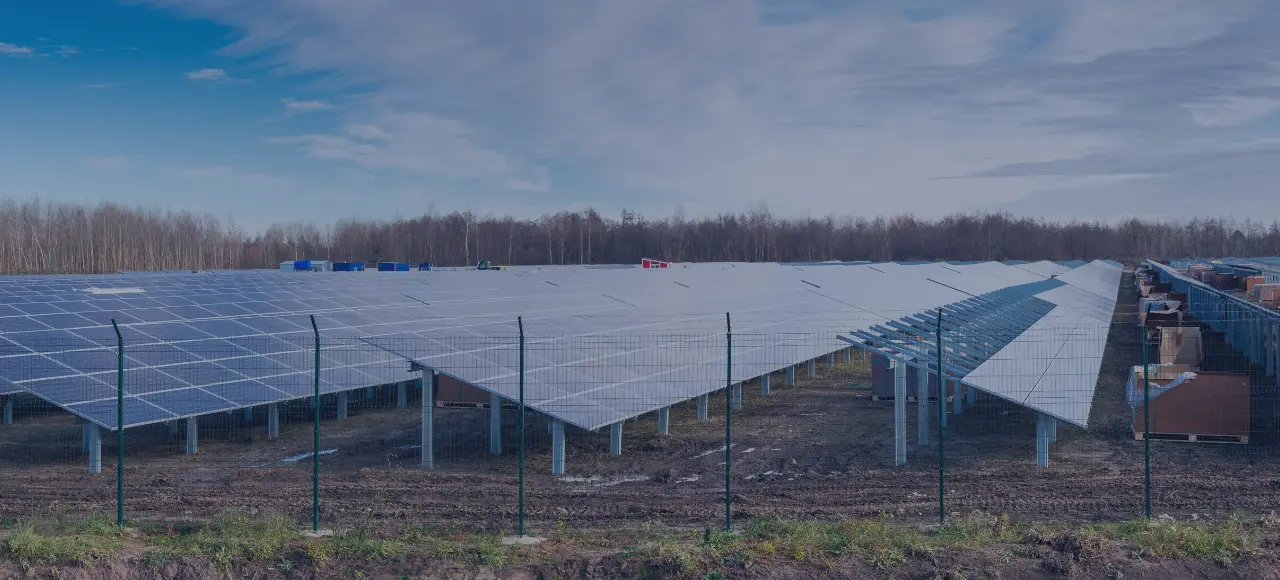The world is changing, and as we strive for a more sustainable future, harnessing the sun’s power is becoming increasingly vital. Solar energy, in all its forms, is revolutionizing the way we generate electricity, and one key player in this solar revolution is ground-mounted solar structures or solar farms. In this blog, we’ll delve deep into the world of ground-mounted solar structures, exploring how they work, their benefits, and their profound impact on our journey toward cleaner, greener energy sources.
Solar Ground Mount Structures
- Solar ground mount structures are the physical frameworks that hold solar panels securely above the ground. These structures can come in various designs, including fixed-tilt and tracking systems. They are often constructed with durable materials like steel or aluminum to withstand environmental conditions. Solar ground mount structures are essential for ground-based solar installations, ensuring the panels remain stable and positioned correctly for optimal sunlight exposure.
- Solar panel ground mounting frames are components of the ground-mounted solar structure holding individual solar panels in place. These frames are designed to securely attach the solar panels to the support structure while allowing adjustments to optimize the panel’s tilt and orientation.
Ground Mounted Solar Structure Design
Ground-mounted solar structure design refers to the planning and engineering of the support framework for solar panels installed on the ground. This design process involves considering various factors such as the site’s geographical location, local weather conditions, the angle of the sun, and the specific solar panel technology used. The goal is to create a structure that maximizes energy capture, provides stability, and minimizes costs. Design considerations may include the choice of materials, anchoring methods, and the incorporation of tracking systems for optimal solar panel positioning.
Rise of Ground Mounted Solar Structures
First, let’s understand the impressive ascent of ground-mounted solar structures in the renewable energy landscape. Solar panels are no longer confined to rooftops; they have descended to the ground, creating sprawling fields of photovoltaic cells that soak up the sun’s rays. For several compelling reasons, these solar farms are pivotal in our transition to clean energy.
- Optimal Exposure to Sunlight: Ground-mounted solar structures are strategically positioned to receive the maximum sunlight. Unlike rooftop installations, which may be subject to shading or limited space, these solar farms can be meticulously designed to capture sunlight throughout the day.
- Scale and Efficiency: Solar farms are vast, comprising hundreds or thousands of panels. This scale enables them to generate substantial electricity, making them ideal for utility-scale power generation. The efficiency of these installations is driven by their sheer size and the ability to use tracking systems for continuous optimization.
- Land Use Efficiency: While it may seem counterintuitive, solar farms are highly efficient in land use. The ground under and around the panels is often still accessible for agriculture or other benefits, creating a harmonious balance between energy production and land utilization.
- Reduced Installation Costs: Ground-mounted solar structures are typically more cost-effective than rooftop systems. Their ease of installation and scalability contribute to lower upfront costs and quicker return on investment.


How Ground Mounted Solar Structures Work
The dynamics of ground-mounted solar structures are fascinating, driven by innovative technologies that optimize energy capture. These systems comprise several vital components that work in harmony to convert sunlight into electricity:
- Solar Panels: The heart of any solar farm is the solar panels themselves. These photovoltaic cells are designed to absorb sunlight and convert it into electricity through the photovoltaic effect.
- Mounting Structures: Ground-mounted solar panels are secured on robust mounting structures. These structures can be fixed or incorporate tracking systems that allow the panels to follow the sun’s path across the sky, ensuring optimal sunlight exposure.
- Inverters: The electricity generated by the solar panels is in direct current (DC) form. Inverters convert this DC electricity into alternating current (AC), the type of electricity used in homes and on the grid.
- Tracking Systems: Tracking systems, also known as solar trackers, enable solar panels to move throughout the day to maximize their exposure to sunlight. These systems can significantly boost energy production by ensuring panels remain perpendicular to the sun.
- Interconnection: The electricity generated by multiple solar panels is interconnected, and then the power is either used on-site, stored in batteries, or fed into the electrical grid.
Benefits of Ground Mounted Solar Structures
Ground-mounted solar structures offer a multitude of benefits, making them an attractive choice for both residential and commercial energy generation:
- Increased Energy Production: These systems capture more sunlight, producing a higher electricity yield than rooftop installations.
- Lower Energy Costs: Solar farms reduce the demand for energy from the grid, ultimately leading to reduced electricity bills.
- Environmentally Friendly: Harnessing solar power significantly reduces greenhouse gas emissions, creating a cleaner environment.
- Scalability: Solar farms can be expanded easily, accommodating growing energy demands.
- Improved Grid Resilience: Distributed solar generation enhances grid reliability, reducing the impact of power outages.
- Economic Benefits: Solar farms create jobs and stimulate local economies, making them valuable community assets.
Final Words
The future of ground-mounted solar structures is bright, quite literally. As technology advances, we can anticipate even greater efficiency, lower costs, and increased adoption. These solar farms will be essential in transitioning to cleaner energy sources, contributing to a more sustainable planet. Ground-mounted solar structures are essential to our clean energy future.
Their scale, efficiency, and potential for growth make them a powerful force in our mission to reduce our carbon footprint and embrace a more sustainable way of life. As solar technology continues to evolve, it’s clear that these solar farms will continue to shine as a beacon of hope in our quest for a greener, more sustainable world. Ground-mounted solar structures are here to stay, and they’re here to power a brighter tomorrow.




FAQs
Ground-mounted solar structures are large frameworks that support solar panels installed on the ground rather than rooftops. Unlike rooftop installations, ground-mounted structures can be optimized for maximum sunlight exposure and can be significantly larger, making them ideal for utility-scale power generation.
Many ground-mounted solar structures incorporate tracking systems that adjust the angle and orientation of the solar panels to follow the sun’s path throughout the day. This dynamic tracking optimizes energy capture, ensuring panels remain nearly perpendicular to the sun, significantly boosting energy production.
Ground-mounted solar structures can be more efficient in energy production because they have more excellent space for optimization and can use tracking systems. However, efficiency also depends on location, design, and environmental conditions.
These structures are anchored using various methods, such as concrete foundations, ground screws, or ballasts. The choice of anchoring method depends on factors like soil type and local regulations.
While often used for commercial or utility-scale installations, ground-mounted solar structures can also be used in residential settings, especially on more significant properties with ample open space.







